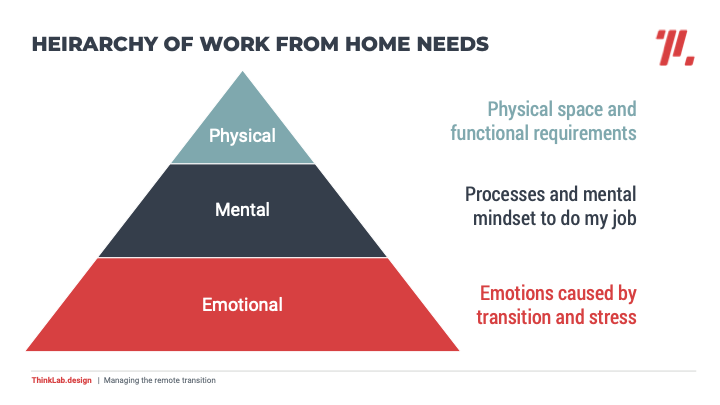
According to the National Association of Realtors, “87 percent of buyers purchased their home through a real estate agent or broker—a share that has steadily increased from 69 percent in 2001.” Yet interestingly, 50 percent of buyers claim to have found their homes online, versus 28 percent finding them through their agent — which suggests that buyers are using technology as a valuable tool or starting place in their home search. Perhaps that’s why 48 percent of all real estate firms cited keeping up with technology as one of the biggest challenges facing their firm in the next two years.
But the residential real estate industry isn’t the only one responding to this change. Viet Shelton, senior communications manager for Zillow, puts it this way, “People now expect magic to happen with the simple push of a button. We’ve seen this in travel, ride hailing, car buying, shopping, and streaming video. In 2006, having a Zestimate on every home was a radical idea. In 2020, consumers expect more. Consumers want something better from their real estate experience. There’s a seismic shift happening in residential real estate to meet consumers’ evolving expectations.”
Across the residential industry, real estate brokerage firms are looking for creative ways to continue to capture market share as consumers are getting savvier and technology is inching in on market share. Transitioning this line of thinking to the traditional B2B sales model: while not all consumers are B2B buyers, all B2B buyers are consumers in their everyday life. And, as consumer experiences become increasingly frictionless, today’s consumers are not willing to settle for a lesser buying experience in their work life.
But rest assured — market research suggests the traditional B2B sales model, across all industries, will not go away. As a testament to this point, a recent Forrester study found that while 68 percent of B2B buyers prefer doing business online versus with a salesperson, when they do engage with a salesperson, they want that experience to be in a more problem-solving, consultative manner. This is the value that a real person (i.e., a residential real estate broker or even commercial product salesperson) provides beyond an online sales tool, specifically with more complicated deals like high-end sales and difficult-to-evaluate products.
Shelton adds, “We know we need great agent and broker partners to help consumers along. We believe the future of real estate will be built by the best agents and brokers supercharged by technology: what we call ‘bionic agents.’ Customers will still need great people behind those on-demand services; just like we need great people to build great products, buyers and sellers need the ear of a trusted and knowledgeable agent to make big buying decisions. To create a truly fantastic customer experience, we’ll need to blend the best of what people and technology have to offer.”
As we look at the transitions the residential real estate world is facing as it weathers the shifts in market share and technology integration, let’s examine some of the parallels we can draw across distribution elements in the contract industry.
Online real estate firms are augmenting the buying experience with technology.
Zillow has been acquiring broker licenses across the United States, with licenses in New York and Arizona, among others. In addition, the brand launched a direct buy program that involves Zillow buying your home without the need to list it through the traditional sales model. Simply take images of the home, answer basic questions, and get an offer within a matter of days.
This service costs 6-9 percent of the purchase price of the home. Breaking this down another way, the standard commission for a residential real estate transaction is 6 percent plus the carrying cost for the time it takes to sell a home – inclusive of mortgage interest, real estate taxes, and wear and tear, which is 1-3.7 percent of the sales price. That means you in essence pay the same amount either way – yet with the direct buy model, you obtain the convenience of an online sales process.
Explaining the impetus behind these shifts, Shelton adds, “Our vision is to create a seamless transaction process for consumers. We created Zillow Offers to streamline the way a homeowner can sell their home. But we’ve also taken steps to transition our Premier Agent program to help our partners in the real estate industry better satisfy today’s consumer expectations. What’s more, we acquired a mortgage company and created Zillow Home Loans to make the financing of a home seamless. And we have begun offering closing services (title and escrow) to deliver greater speed and transparency to that step in the journey.”
The major takeaway from these additional services? Digital sales aren’t just on the horizon – they're here to stay and will be representing a large market segment in the future. That being the case, it puts the onus on the sales representative to differentiate their service offering, as seen in Zillow’s model to expand its offerings beyond being an online resource. Or, on the contrary, in the case of B2B sellers, it requires robust technology platforms to augment in-person sellers.
Companies are sweetening their service offerings to remain competitive.
While not yet announced, a recent market survey released by Redfin suggests the company is looking into offering unique sales guarantees — with options that may include a 30-day buy back for unsatisfied buyers or a 0.5 percent refund on your home purchase after closing. This plan is in addition to the company’s RedfinNow program, which, like Zillow’s, offers buyers the ability to get an all cash offer for their home without selling through the traditional broker model.
In many ways, these guarantees or reduction of risks are going to be a necessity of doing business as companies look for ways to stand apart in a competitive landscape. While technology offers convenience, the human element of sales in residential real estate and likewise in B2B sales, offers the industry expertise, empathy, and assurance that is unlikely to be achieved from an online platform alone in the near future. Complementing your human sales force with technology and backing it by a stellar product satisfaction guarantee will be how the traditional B2B sales models not only stays alive, but also thrives.
Ask any taxi driver ten years ago if they thought technology would play a role, much less a competitive force, in their industry, and they would have laughed you out of the room. But today, just like technology is shifting the landscape for taxi/Uber drivers and residential real estate, it also leaves us with inspiration or perhaps motivation to improve the client experience in the contract interiors industry. Success in the traditional sales model requires the ability to adapt to the environment while providing a differentiated human element that makes your offerings more attractive than the convenience afforded by technology alone.
As Forrester puts it, “This is not so much a story about loss but one of re-engineering — re-engineering the sales strategy, selling motion, and sales teams, then orchestrating it to avoid a hit to the top line. Digital experiences must perform in tune with consumer-oriented expectations of B2B buyers; leaders will need to optimize the size and nature of existing sales teams, and maybe the most daunting task of all will be the hiring of a consultative sales force in a labor market that is under-supplied and sought-after.”
Featured image: "We believe the future of real estate will be built by the best agents and brokers supercharged by technology: what we call ‘bionic agents.'" - Zillow (Image Credit: Zillow)
This article originally was published in Bellow Press and was reposted here with permissions.
Amanda Schneider is President of ThinkLab, the research division of Interior Design Media. At ThinkLab, we combine Interior Design Media’s incredible reach within the architecture and design community with proven market research techniques to uncover relevant trends and opportunities that connect back to brand and business goals in a thought-provoking, creative, and actionable way. Join in to know what’s next at thinklab.design/join-in.


